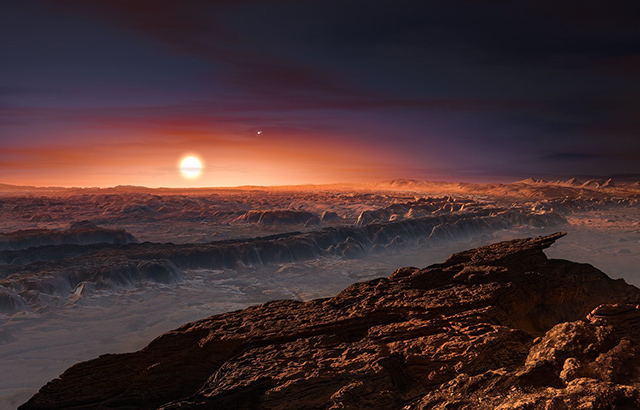International team led by Catalan scientist discovers an Earth-like planet
Proxima b orbits within what is considered to be a habitable zone of the star Proxima Centauri. The temperature on the surface of the rocky planet could allow the presence of liquid water, according to the research, developed at the Queen Mary University of London. This means that Proxima b, which has 1.3 times the mass of the Earth, could potentially be the first planet to host life outside of the Solar System discovered by humans. The planet takes 11.2 days to travel around its star, Proxima Centauri, covering during its orbit only 5% of the distance that separates the Sun and the Earth. However, scientists argue that this star is smaller and less intense, making the existence of life possible.

Barcelona (CNA).- Exciting discovery in the search for life in the universe. An international team of researchers led by Catalan Dr Guillem Anglada Escudé has discovered an Earth-like planet that could potentially host life. The planet, named Proxima b, orbits within what is considered to be a habitable zone of its star, Proxima Centauri. According to the researchers at the Queen Mary University of London, the temperature on the surface of Proxima b could allow the presence of liquid water. The planet, which has 1.3 times the mass of the Earth, could therefore potentially host life: the first planet outside of the Solar System able to do so. However, Proxima b is very far away from the Earth, 4.2 light years, which makes it impossible to reach using today’s spacecraft technology.
Proxima b is a rocky planet, like the Earth, and takes 11.2 days to orbit its star. This means a year in Proxima b is only 11.2 days, and not 365 like in our planet. The planet covers during its orbit only 5% of the distance that separates the Sun and the Earth, but scientists argue that life is nonetheless a possibility because its star is much smaller and less intense than ours.
The research by Dr Guillem Anglada Escudé and his colleagues is published this Thursday by Nature. The scientist said that the first signs of the planet were discovered in 2013. Back then, however, there was no convincing data to confirm the existence of the planet. Using facilities operated by the European Southern Observatory and other telescopes, the scientists were able to confirm earlier this year the discovery of this new world, which is the closest planet and the closest possible home for life outside of the Solar System.
“Succeeding in the search for the nearest terrestrial planet beyond our Solar System has been an experience of a lifetime”, said Dr Guillem Anglada Escudé in a press release published by the Queen Mary University. “We hope these findings inspire future generations to keep looking beyond the stars. The search for life on Proxima b comes next”, he added.